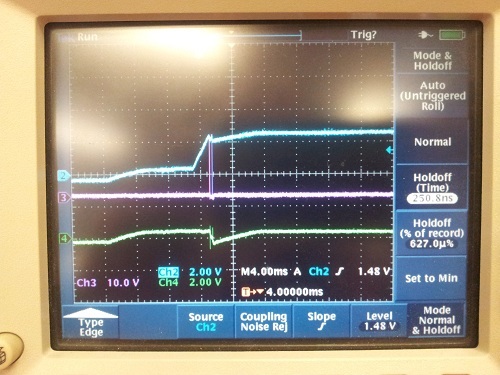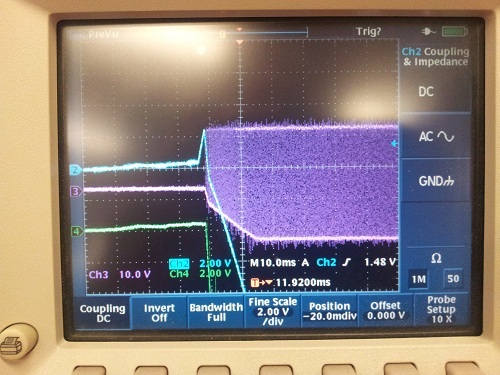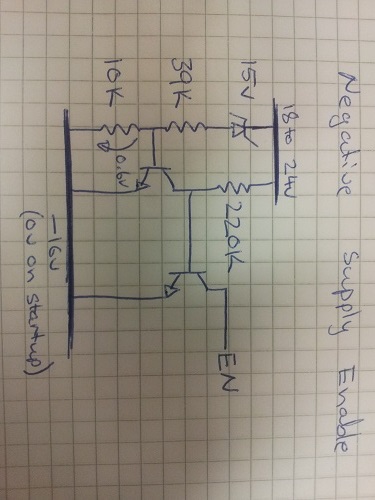I am using a two LM22672MR-ADJ. One to generate a +16V supply, the other to generate a -16V supply. Both converters are powered from the same +24V supply rail. They are both synced from an external clock running at 768Khz.
When I leave the enable pin floating they both start up fine and run perfectly, however in the overall design of the system I need to delay the startup of the converters until the 24 volt rail reaches 18 volts or more.
When I connect a resistor voltage divider to each enable (with a 5V zener to protect the enable pin from any chance of over voltage) I find that the LM22672MR-ADJ used in the +16V converter starts up fine, but the LM22672MR-ADJ used in the -16V supply will only start up successfully about 50% of the time.
The topology I have implemented is basically what is suggested in the datasheet on page 15.
http://www.national.com/ds/LM/LM22672.pdf
Obviously, since I am going for a different output voltage and running at a different frequency my component choices are different.
I have noticed that when the -16V converter starts up, its "ground" which becomes the -16V output actually goes positive relative to true ground because of the diode in the circuit. Is this potentially causing a problem with the feedback? The only thing I can think of is that adding the enable resistors (between Vin, EN and GND (aka -16V) is altering the feedback network and causing the converter to sometimes fail on startup.
How do people normally use the enable pin for this chip when it is configured for this inverting mode?




